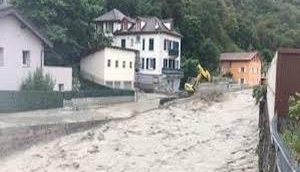
The national census of India defines a 'literate' person as one having the ability to read and write in any language. But in today's technology-driven world the concept of literacy has changed and we need more than reading and writing to function in this age of 3D printers and self-driving cars.
But not all countries have a less than perfect education system such as ours - a few countries have actually adopted an education system that will equip students to deal with societies and economies driven by the digital age. Finland is one such country. By 2016, all primary schools in Finland will have coding as a core subject in their curriculum.
Finland's education ministry is also smart enough to understand that their teachers are not yet equipped to teach computer programming courses to their students. They have taken the help of IT companies to host introductory courses in programming in schools across the country.
Finland ranks very high amongst developed countries in education and literacy. And it has a lot do with its innovative and unusual education systems.
Here are some exceptional reasons to give a shout out to Finland:
- Education is free: In Finland, education is free in not just schools (they have no private schools) but also at the college level. Yes, you read that right. Bachelor degree programs and even master and doctoral programs are free of cost! In the US, students spend at least $23,410 (Rs. 15,47,401) as tuition fees for four years of public college.
- Only one standardised test: Throughout their school-level career, Finnish students take one only standardised test - at the end of high school. On the other hand, American school children take standardised tests right from the third grade to eigth grade and take their SATs in the 11th grade.
- More time to play: According to an OECD survey, on an average, Finnish teenagers spend around 2.8 hours a week on homework. Indian students are sure to burn with with envy while reading this.
- Pre-school is voluntary: Most children in Finland start their formal education at the age of six or seven; going to pre-schools is voluntary. Interstingly, in India, pre-schools have become a lucrative industry; according to a report, the number of pre-schools in India is growing at a rate of 40 per cent annualy.
- Teaching is a valued profession: Unlike in countries like India, teaching is one of the most valued and respected professions in Finland. According to a Business Insider report, only one in 10 students who apply to teacher education programs are admitted. Also, on an average, Finnish teachers make $43,000 a year (that's Rs.28,73,690). A TOI report says that government teachers in India earn around Rs. 20,000-40,000 per month.
Finland is especially considerate of children who are slow to learn. Two per cent of their students attend special institutions. Another tidbit: foreign TV shows are not dubbed, but rather feature subtitles to emphasise on reading and learning.
Also, Finland has a strong library culture. Almost 80 per cent of Finns visit the library regularly. On an average, each person borrows 10 books, discs or magazines in a year.
Cheers to Finland and their education system!








![BJP's Kapil Mishra recreates Shankar Mahadevan’s ‘Breathless’ song to highlight Delhi pollution [WATCH] BJP's Kapil Mishra recreates Shankar Mahadevan’s ‘Breathless’ song to highlight Delhi pollution [WATCH]](https://images.catchnews.com/upload/2022/11/03/kapil-mishra_240884_300x172.png)

![Anupam Kher shares pictures of his toned body on 67th birthday [MUST SEE] Anupam Kher shares pictures of his toned body on 67th birthday [MUST SEE]](https://images.catchnews.com/upload/2022/03/07/Anupam_kher_231145_300x172.jpg)






